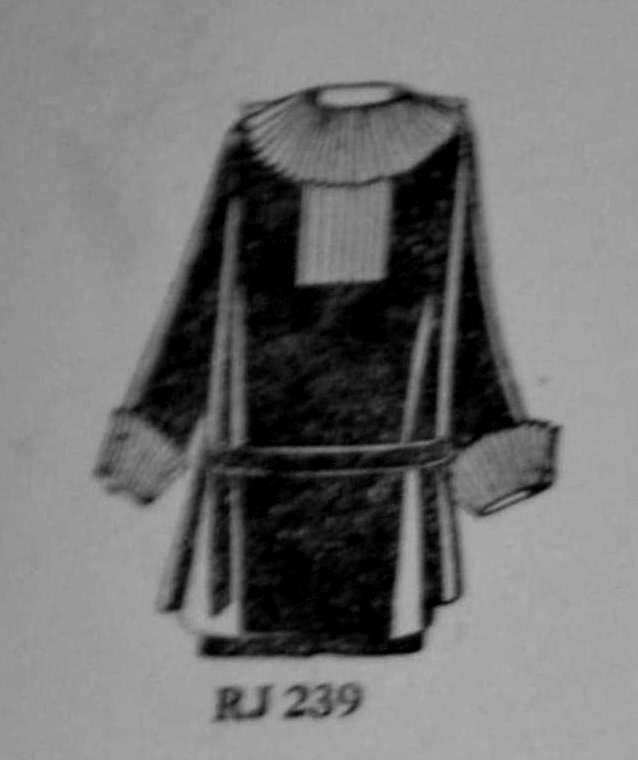
Rowe of Bond Street: Kilted Party Suit (1910s)

Figure 1.--We do notice a kilted suit offered by Rowe of Bond Street. It was the only skirted outfit offered on the party suit pge. This does not look like a kilt. It is described in the catalog as "Black velve, kilted, Georgette collar, cuffs, front,". It was for boys 2-4 years of age. We are not entirely sure how to describe it, either a kilt suit or a tunic. As the Rowe party suit page began with size 2 years, it can be seen that skirted garments fr boys was no longer a major item. Of course we do not have the full catalog so there may have been a few boy dress items offered.
|
|
Younger boys were commoly dressed in shirted garments in the 19th century. This fashion began to declinre in the late-19th century and was much reduced in the 1900s. We no longer see many skirted garments in the 1910s with the excption of tunic suits and occassionly kilts. Tunics were often referred to as Buster Brown suits in America refering to Buster Brown, an American comic strip character who famously wore tunic suits. You can see the Busters offered by Rowe in the party suit page listed below, but they are not tunics. Dresses had virtually disappeared and Engish boys never wore smocks to any extent. We do notice a kilted suit offered by Rowe of Bond Street, an up-scale London retailer. It was the only skirted outfit offered on the party suit page. This does not look like a kilt. It is described in the catalog as "Black velve, kilted, Georgette collar, cuffs, front,". It was for boys 2-4 years of age. We are not entirely sure how to describe it, either a kilt suit or a tunic. As the Rowe party suit page began with size 2 years, it can be seen that skirted garments fr boys was no longer a major item. Of course we do not have the full catalog so there may have been a few boy dress items offered. We were not entirely sure what was meant by 'Georgette collar. We at first thought it meant the shape of the collar. The one pictured here is a large white, rounded collar. This was a residual Fauntleroy feature, but not relted to the name. Apparently the reference is to the fabric used. Georgette is a crÍpe fabric--Crepe-de-chine dscribe above. The usage here comes from crÍpe Georgette, is a sheer, lightweight, dull-finished crÍpe fabric named for the the early 20th century French dressmaker Georgette de la Plante. It was originally a silk fabric and the one pictured here was surely silk crÍpe Georgette with a crinkly surface. As we see on this page, the fabric was used for blouses and youngr boy's pants. It as also used for girls' and women's dresses as well as trimmings like the collar with this kilted suit. crÍpe Georgette is springier and less lustrous than the closely related chiffon which was not used for boys' clothes.
HBC

Navigate the Boys' Historical Clothing catalog/magazine pages:
[Return to the Main English 1910s catalog page]
[Return to the Main English catalog chronology page]
[Main photo/publishing page]
[Store catalogs]
[Fashion magazines]
Navigate the Boys' Historical Clothing Web Site:
[Introduction]
[Activities]
[Biographies]
[Chronology]
[Clothing styles]
[Countries]
[Topics]
[Bibliographies]
[Contributions]
[FAQs]
[Glossaries]
[Images]
[Links]
[Registration]
[Tools]
[Boys' Clothing Home]
Navigate the Boys' Historical Clothing Web Site:
[Sailor suits]
[Sailor hats]
[Buster Brown suits]
[Eton suits]
[Rompers]
[Short pants]
[Tunics]
[Knits]
[Smocks]
[Pinafores]
Created: 6:18 PM 10/20/2014
Last updated: 6:18 PM 10/20/2014



